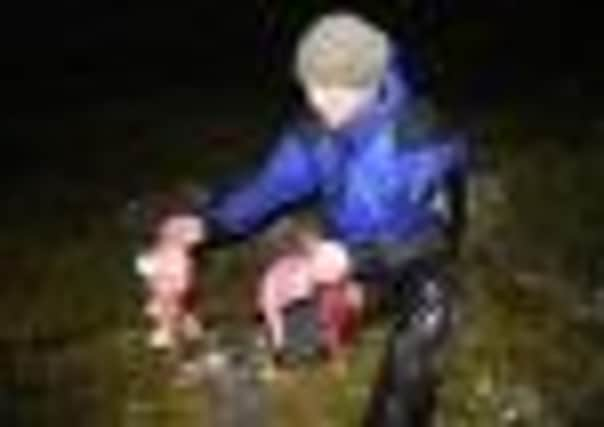Roger Cox: If my ancestors were as rubbish at bushcraft as me I wouldn’t be here today to be humiliated


I’ve even managed to set the spindle spinning a few times by pumping the bow in my right hand back and forth like a man possessed. Trouble is, whenever I get a hint of smoke and Neil Foote, my instructor in all things bushcraft, advises me to “apply more downward pressure,” something somewhere slips out of alignment and – TWANG! – the whole shebang springs apart in my hands.
In theory, if I’m able to keep my spindle spinning hard and fast enough for long enough, I’ll start to generate super-heated wood dust known as punk and, eventually, a precious ember. Trouble is, after what feels like an awful lot of spinning I’ve only amassed a very pitiful punk pile. Channeling my Stone Age ancestors, who would have had to do this every time they fancied a cup of tea, I take a deep breath and give it one last try. For a moment it seems as if I might finally be getting somewhere, then ... TWANG! The ancestors turn in their burial mounds.
Advertisement
Hide AdAdvertisement
Hide AdDefeated, I console myself with the fact that, as it’s raining steadily and blowing a hoolie, our chances of getting a fire going by rubbing sticks together are surely slim-to-non-existent. But I haven’t reckoned on Foote’s bow-drill prowess. After just a couple of minutes he’s generating great clouds of smoke. A minute more and he’s produced a tiny glowing ember which, when added to a bundle of deer grass (gathered earlier in the day and dried out inside our jackets) gives us a flame. I am beyond impressed.
Foote and I are at the halfway stage of a two-day yomp through the Lairig Ghru, the dramatic mountain pass that runs north-to-south for 20 miles through the heart of the Cairngorms, connecting Speyside and Deeside. In addition to friction firelighting, Foote’s company, Backcountry Survival, offers tuition in the lost arts of plant lore, wild food preparation, natural navigation and more. Clients who want to focus exclusively on the skills can do so at the company’s base at the Alvie Estate, just outside Aviemore. The beauty of a trip like this, though, is that everything you learn feels immediately relevant – you don’t have to imagine how you might put a new skill into practice in the field because you’re in the field already.
A former soldier, 29 year-old Foote still has a military way with an understatement, and he describes weather conditions on Day One as “attritional”. The Mountain Weather Information Service promises “upland gales, typically 45mph, gusts 65 to perhaps 75mph” and from the south, too, so coming straight at us. To begin with, as we ascend through the forest of Rothiemurchus, gathering kindling and learning about the various uses of pine needles and sphagnum moss, we are nicely sheltered, but as soon as we leave the cover of the tree line, things start to get interesting. By the time we reach the Pools of Dee, the highest point of the pass at 835m, we’re negotiating slippery boulderfields in a 60mph headwind – a bit like trying to do ballet in a wind tunnel.
As night falls, we pitch our tent across the valley from the mist-shrouded cliffs of the Devil’s Point and then Neil gives me a crash course in hare butchery – we’ve been carrying two freshly shot mountain hares on our backpacks all day, and now it’s time to turn them into kebabs. They may be a bit bedraggled after their day in the rain, but they yield a surprising amount of meat and taste delicious.
Next morning the weather eases up and so does the terrain, which slowly shifts from the stark, foreboding crags of the pass to the more sedate rolling hills of Royal Deeside. The wildlife is in full effect too: just as Neil is explaining basic tracking techniques, a stag roars at us from the other side of the valley. Lovely to see him, but I wouldn’t want to have to carry him on my back.